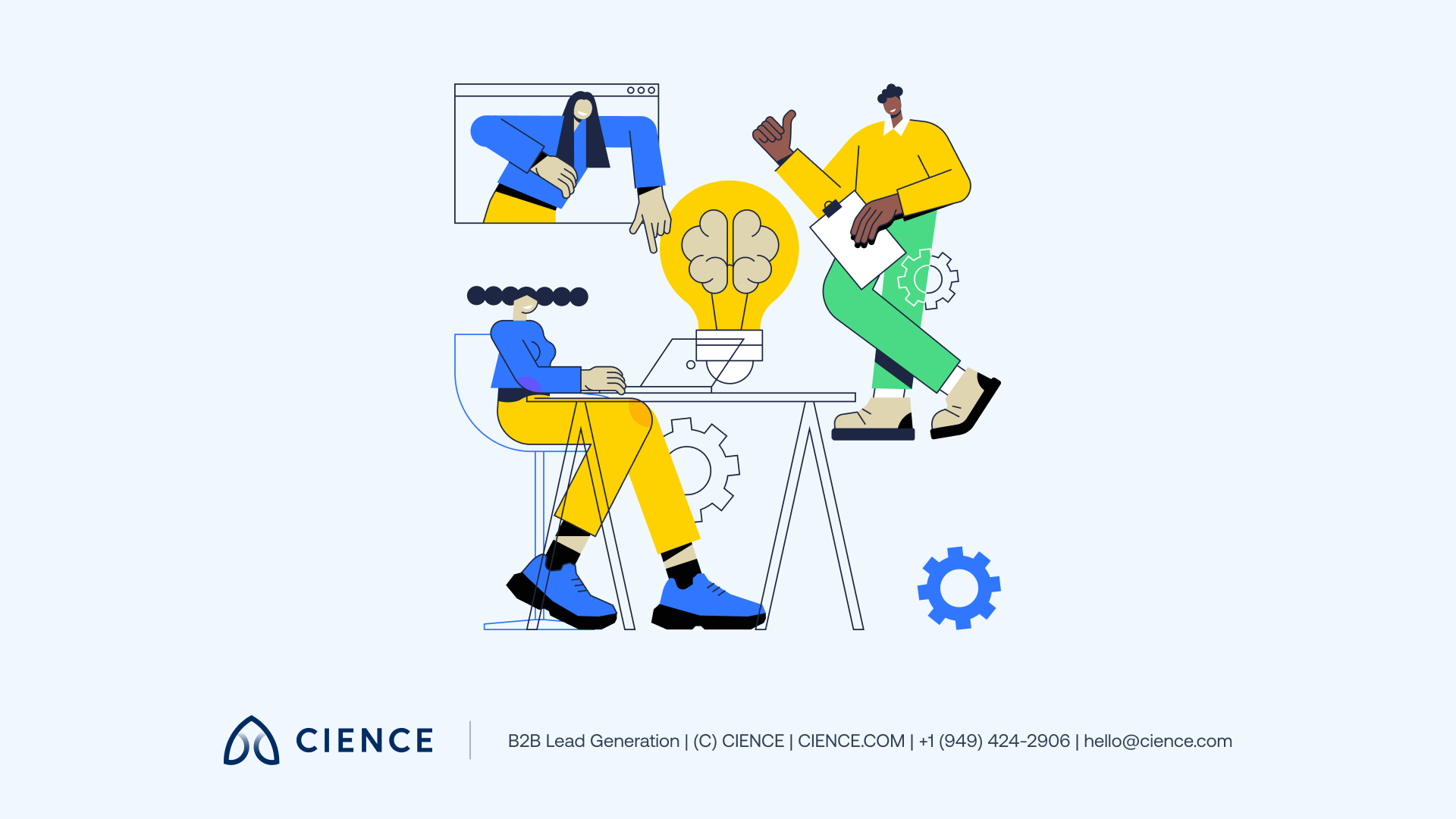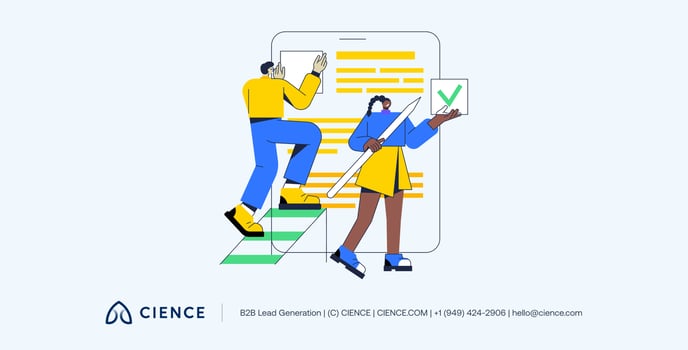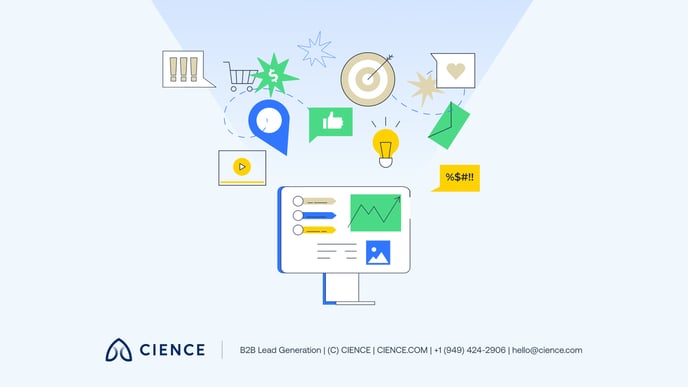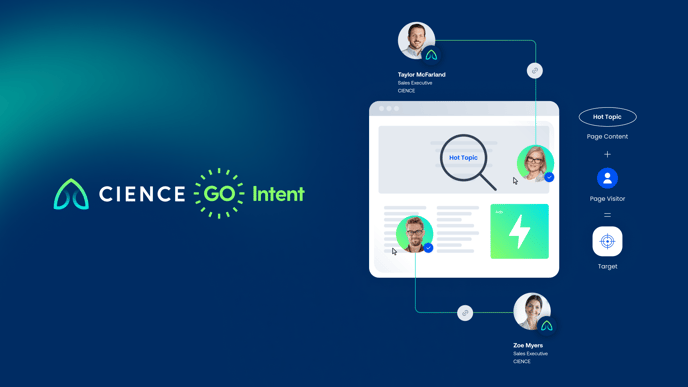What Is Buyer Intent Data and How Do You Use It to Improve Sales?
When it comes to sales growth, intent data is proving to be a great way to access high-quality prospects. According to a Demand Gen Report, 97% of the interviewed companies reported a positive ROI from using intent data.
This means great news for sales and marketing teams as prospects swap to a more independent buyer's journey. Gartner found that potential buyers spend only 17% of their cycle meeting with potential suppliers and only about 6% actively interacting with a sales representative.
Knowing what types of content, topics, and websites are used by prospects in their decision-making process can help vendors and advertisers create more personalized campaigns that address the most prominent needs. This is the primary goal of intent data techniques.
That said, only 25% of B2B organizations actively use buyer intent data to improve their targeting, meaning that those who integrate this methodology early on will have the upper hand against their competitors.
Let's touch on the meaning of intent data, its most useful applications and traits, and how it has transformed sales for good.
What Is Intent Data?
Intent data is the collected behavioral information about digital users’ web content consumption. Intent data providers can analyze targeted niche-relevant web pages and identify what they are about, who visits them, and what sections are most viewed.
These insights allow marketers to make inferences about the underlying intent and create remarketing campaigns, inbound content, and follow-up strategies that match those queries.
Decision makers (like every other human with Internet access) leave a data footprint while performing an online query. Obviously, not all research will be related to solving a specific need inside their organization, but the type of content they click on, and the time spent on each, reveal some hints about their intent.
When buyer intent data tools are active, it is possible to track the consumption spikes of topic-driven content, which indicates a particular digital user is showing a level of interest in the type of product your company offers.
Some examples of these content consumption interactions are:
- Webinar attendance
- Newsletter subscriptions
- White papers downloads
- Case studies reviews
- Product comparisons
- Message boards
With the proper settings, tools, and tactics, it has the potential to allow B2B marketers to peek into a prospect's purchase journey and establish their brand as a top choice.


Benefits of Using Intent Data
While the best attributes of intent data marketing may be the gaining of juicy insights into which companies are researching for the solutions you provide, there are other related applications of this data-driven methodology.
When mixed with data segmentation processes, which consist of dissecting and scoring account-related data through different criteria, marketing intent data strategies can support new business development teams with these actions:
1. Boosts prospecting
How to use intent data correctly is intimately correlated to the process of identifying potential buyers in the earliest stages of their journey.
Online tools can activate alarms on the type of content your visitors are consuming the most, providing your sales development representatives (SDRs) the opportunity to target them with tailored approaches on how your product could become the perfect match for their situation.
2. Improves ROI
Return on investment (ROI) is one of the most important performance indicators for any new business development team. The use of marketing intent data strategies allows your search engine marketing (SEM) experts to qualify several attributes out of a lead, like their demographics, firmographics, industry, revenue, and buyer stage.
This means that your retargeting and remarketing efforts can be aimed at the higher tier of your target account list, granting your team a clear passage to prospects eager to close a deal.
3. Finds new markets
Targeting the audiences that are a familiar fit for your solution is always a safe bet, but intent data also helps you discover additional lead sources that could have been flying under your radar.
You should be vigilant of the spikes of unexplored industries. Chances are that new environments open an opportunity window for your product to become handy in ways you didn't imagine. Once these fresh markets are detected, be sure to create appropriate content for the newcomers.
4. Enables ABM campaigns
Account-based marketing (ABM) is the way to go with high-end prospects. Thanks to sophisticated intent data integrations, it is possible to map your prospect's journey and provide them with the content pieces that hold the answers to their questions.
Nurturing your leads with the proper articles, videos, webinars, white papers, and other relevant material that also feel tailored for their eyes will help your SDRs to pin out the purchase-ready profiles.
5. Cultivates your SEO
Present-day search engine optimization (SEO) is all about online authority. While backlinking and other programming tactics are still relevant to rank a web page, Google is openly prizing the sources of meaningful content that aim to solve the users' queries.
Thanks to intent marketing data, you'll be able to fully understand the topics, formats, and styles of content your prospects hunger for. Use these hints as inspiration and propel your inbound marketing campaigns.


B2B Intent Data Considerations
Is all data considered intent data? The quick answer is “no.” Marketers (especially those working for B2B brands) should be very wary of the effects of data exhaust, also understood as the massive amounts of unprocessed data flowing daily toward your digital channels.
To prevent confusion, be sure your marketing experts are capable of identifying the following intent marketing data characteristics:
Recency
This first trait refers to the correct recognition of how recently a prospect profile engaged with the content on your website.
If your team took more than a week to contact the lead that requested a follow-up action, it is almost certain that they already went with one of your competitors. So be ready to strike first, strike fast.
Frequency
Frequency means the ability to filtrate and point out what user is constantly visiting your website for a limited time.
If you can detect that a user is going over your case studies, white papers, and pricing page, there is a good chance that they are considering your proposal for their buying journey. This is a great time to reach out and confirm the user's intent.
Engagement
This is probably the most evident indicator. It relies on the level of interest displayed by a particular user toward a certain section or content piece inside your website.
Engagement reactions can go from passive, like subscribing to your email nurturing campaign, to very active, such as a back-and-forward interaction with a chatbot inside your web page. It all comes down to what applications you have on-site and how able you are to trigger a solid follow-up strategy.
Consider all these indicators to be certain that you are working with intent data. While it might be a bit tricky to identify all the traits at first glance, once a data-based culture is grown into your organization, they will be very easy to find.


What Are the Types of Intent Data?
Intent data marketing relies on activity indicators like HEM, cookies, device IDs, and many more to track online visitors' movements inside and outside your website. For this reason, intent data can be divided into the following categories:
First-party intent data
Internal intent data is also known as first-party intent data, and it refers to all the data collected directly from your website. Depending on what data-processing integrations you decide to work with, your team will be able to collect gated content, IP addresses, submitted forms, and other first-handed information from your visitors.
Once visitors enter your website, you should be able to monitor the time they spent on-site, what sections were clicked, what topics or articles were seen, and analyze their behavior to identify their interest level, buyer stage, and more.
The most basic levels of first-party data research can be reached through analytics tools, marketing automation platforms, or backend coding of your website, and while the quality of first-party data is unbeatable, it is also limited.
Only a fraction of prospects that are actively searching for a solution will reach your site (even with active sales and marketing efforts), and about 15% of them will be ready to actively engage in a buying decision.
Also, a big share of wandering visitors prefers to do their research anonymously, meaning that your intent data marketing reps will have a hard time identifying the business or individual with an IP identification of previously submitted forms.
For these reasons, it is highly recommended to pair first-party and third-party data into your lead generation strategies.
Third-party intent data
On the other hand, external intent data or third-party intent data involves information that is collected across the web. It provides a wider view into an account's interest across the web and can highlight a particular intent over particular topics and sites relevant to your product.
In most cases, prospects that are looking for a solution to their needs will go over several websites, blogs, webinars, case studies, and product reviews before even thinking about requesting a proposal.
A key action regarding this type of data is that it offers the opportunity to collect information from your competitors' websites, allowing your company to outsmart them by offering a more sensitive, personalized, and engaging experience.
Then again, if your marketing strategies are solely focused on third-party data, it is very likely that the users that are actively looking for a solution inside your website will not be treated with the attention and care they need.
When first- and third-party data insights are merged, they can provide a complete picture of what a prospect account craves, as well as their business drivers, ambitions, issues, and, most importantly, their likelihood to buy from you.

How to Collect Buyer Intent Data
While there are numerous options for raw data collection, like peeking at customer information pools or buying suspicious target account lists, you must keep in mind that this is very sensitive information, and not every prospect will appreciate a cold call out of the blue.
For this reason, the following data collection strategies will help you gather all the information you need in a safe and trustworthy matter for both your prospect and your organization:
First-party intent data collection
No need for buying intent data here—you are the ruler and your website is your kingdom. Everything is your property, but the grounds are so vast that you'll need to make a list to classify all your goods. That's pretty much how internal intent data collection works.
Through the right analytic tools living on your website, you'll be able to track all the activities performed by a visitor. This so-called activeness could be divided into two groups: unconscious and conscious.
The first group includes all the data footprint left behind without the awareness of the users. Sure, they might have accepted your cookies, but they won't be thinking too hard about how many clicks they made on your website.
Examples of the unconscious actions performed by your possible clients may include:
- Amount and type of the most consumed content
- Number of times it was consumed
- Amount of time they spent on your page
- What sections they visit the most
- What their scroll speed was, etc.
This type of data can be gathered through tracking pixel technology. Some pixels will even be able to identify anonymous traffic and create live profiles of your online visitors, so be sure to work with the one that best suits your needs.
Conscious internal intent data collection can be simpler, but you'll still need to craft luring CTA buttons, forms, surveys, questionnaires, and other integrations that will leave your visitor hooked and waiting for your email, call, or next content entry.
The success of conscious first-party data highly depends on UX and UI features, an organic website design, mobile-friendly optimization, site speed, and other assets that will make your user feel comfortable while exploring your landing page.
Third-party intent data collection
The harvesting of third-party intent data works quite differently because you don't owe the information you are pursuing. It almost compares to a stealthy operation in which you adventure yourself into unknown grounds, trying to snatch a precious treasure from the claws of a sleeping dragon. Thankfully, you don't have to travel alone.
There are numerous third-party partners and platforms that will be more than happy to fetch you the data you are looking for without breaking a sweat. There is nothing shady in this process (of course) because the dragon is fully aware that this data treasure is not his property, so everyone bold enough can come and claim its share.
These external marketing intent data providers are experts in researching the activity happening through thousands of data sources that include websites, social media profiles, media publishers, digital panels, browsing events, and other fountains of information.
They are also able to provide powerful insights on the most relevant industries, company characteristics, key stakeholders, decision-makers, and other persons of interest whose data would help your business development reps to create high-end target account lists.
What Is CIENCE GO Intent?
CIENCE GO Intent is an intent data provider that analyzes billions of signals across 34 million web pages processed, with coverage on 3.2 million accounts to determine the content preferences of in-market buyers.
The GO Intent software is able to accurately determine the semantic meaning of the most-searched website pages by your ideal customer profiles (ICPs).
This helps marketing and sales teams target the right leads from the earliest stages of their buyer's cycle so prospects can be properly nurtured until they are ready to become clients.
By combining top-notch big data applications with CIENCE’s in-house natural language processing (NLP) experts, GO Intent can filter the hot topics related to your target audience so advertisers can launch the best-fitting ad campaigns. It allows content creators to leverage the most-optimal keywords to hit outreach precisely.
GO Intent benefits
GO Intent also provides daily possible buyer lists related to the most relevant topics of a particular industry or digital community. By using profiling match-rate technology, sales and marketing teams are able to deploy ABM strategies that generate higher click-through rates and better-targeted messaging.
Some of the key features of GO intent are:
- New intent results every four hours
- Buying-window data for sixty days
- Account lead scoring
- Page-level heuristics
- Advanced click-tracking AI
- Downloadable in-market buyers list
GO Data integrations
Integrating CIENCE GO Data, our sales intelligence platform that holds over 300 million validated contact records, with GO Intent enables you to analyze the content consumption behavior of the most-visited websites according to all major niches.
This allows GO Intent users to access potential buyer profiles with the following criteria:
- Seniority level (C-suite, VP, director, manager, staff, partner)
- Title keyword search
- Company name
- Contact geolocation
- Company HQ country
- Industry
- Company specialties
- Company revenue
- Number of employees
GO Data customers purchase access to the data subscription service, which includes flat fee pricing and GO Intent for all customers. This means existing GO Data customers will be able to access GO Intent immediately.
Leverage Intent Data to Drive More Sales
Understanding, processing, and applying predictive data strategies are quickly becoming a top priority for data-driven companies that wish to remain competitive. Its many applications in the sales and marketing workflow have been proven to be a game-changer for business development efforts.
With the uprising of account-based marketing methodologies, high-end prospects are more aware than ever of how their data footprint works, meaning that they expect to be reached solely by the sales reps that possess real evidence that supports why their product might become the perfect solution they have been looking for.
Buyer intent data is not only the green light that tells sales development representatives when to hit the gas, but it also helps them understand how fast they should go, delivers insights on how to take each curve, and provides meaningful assistance throughout the whole race. So turn the intent data engine on and drive your company at the speed it was always meant to go.

Precise Programmatic Ad Targeting
GO Digital is a Demand Side Platform with your ideal audiences built in.
Grow with Targeted Ads!
A Few (Related) Sales Posts
 Read full post: 12 Best Intent Data Providers for B2B Companies
Read full post: 12 Best Intent Data Providers for B2B Companies
12 Best Intent Data Providers for B2B Companies
 Featured image: GO Digital Intent: Prioritized Outreach - Read full post: CIENCE Launches GO Intent: Prioritized Outreach
Featured image: GO Digital Intent: Prioritized Outreach - Read full post: CIENCE Launches GO Intent: Prioritized Outreach


 Read full post: A Step-by-Step Guide to Interviewing Customers to Build an Ideal Customer Profile
Read full post: A Step-by-Step Guide to Interviewing Customers to Build an Ideal Customer Profile